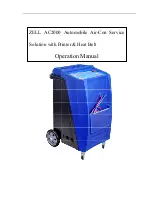
Product Specification
- Mains voltage:
/- 10%
- Mains frequency:
50 - 60Hz
- Power Consumption:
4VA
- Emergency output voltage range:
(See product label)
- Emergency Duration:
(See product label)
- Battery:
(See product label)
- Allowed ambient temp:
+5°C to +35°C
- Weight
0.6kg
- Charging time:
24 hours
- Protection class:
1
- Degree of protection:
IP20
- Em module complies with:
IEC 61347-2-7
- Suitable for installation to EN50172 and BS7671
Installation & Operating Instructions
Universal Remote Emergency Pack
Installation
NOTE –
To comply with regulations, installation must be carried out by
a suitably qualified competent person and in accordance with the
current IEE wiring regulations (BS7671) and building regulations.
Ensure the mains supply is isolated before attempting installation!
Page 1
19572 – Issue 1
Emergency Lighting 'standard' or 'manual' Test
The following minimum ongoing inspections and tests should be
carried out:
Monthly
Switch off the mains power supply to the lighting unit. Inspect all
emergency lights for satisfactory operation.
Yearly
Switch off the mains power supply to the lighting unit. Leave the unit
to run for the rated period (e.g. three hours). The lights should remain
operable from the battery for the whole period.
Any defects should be noted and rectified by a competent person as
soon as possible. Please be aware that further inspection / testing may
be required, e.g. by risk assessment / local legislation.
Commissioning
Once the luminaire has been installed and basic emergency
functionality checked, the battery should be allowed to charge for a
minimum period of 24 hours before testing for its rated duration. If it
is anticipated that the un-switched supply may be interrupted, it is
imperative that the battery is left disconnected and commissioning is
delayed until the supply is stable. If the luminaire has been stored for a
number of months, it may be necessary to repeat the
charge/discharge process several times to re-condition the battery.
After successful commissioning, the battery box label should be
marked with the date of the test and the Engineer responsible.
The emergency pack is for use with LED Modules only. Please refer to the
appropriate diagram on page 2 of this leaflet for details of mains supply,
LED driver, battery and lamp connections.
If non-locking external plug and socket connectors are used, i.e. without
means to prevent accidental disconnection, the remote box should be
sited so that it is protected from unauthorised disconnection.
A recessed plastic bezel can be found inside the packaging carton to
assist installation of the indicator LED. A 14-16mm hole should be drilled
in the required location so it is visible during normal use.
Before use, the battery will need to be connected by plugging in the red
and black lead from the hinged end of the battery box into the
appropriate white socket, under the cover at the hinged end of the
emergency driver. (See diagrams on page 2).
Important:
The battery plug and socket are polarised and should be
connected together carefully and ensuring the polarity is correct.
To avoid subjecting the battery to excessive charge/ discharge cycles
during installation stages, it is strongly recommend the battery is only
connected when the mains supply is stable and the product is ready for
commissioning.
Once all the necessary connections have been made, use the plastic end
covers and screws provided to secure cables in place and to prevent
unauthorised access.
When the un-switched mains supply is turned on, the green indicator LED
should be illuminated as follows:
- LED on: Mains supply ok, battery connected and charging.
- LED off: Mains supply is off [or below 160V], the battery is not connected
or possible faulty unit.
Batteries and Disposal
The battery has a designed service life of 4 years and must be replaced
in a timely manner to ensure the integrity of the emergency lighting
system is maintained. In any case, the battery should be replaced
when it no longer provides the rated duration (3 hours).
The manufacturer of the emergency pack is committed to fulfil its
obligations as a producer of batteries used in emergency lighting
applications. End-of-life batteries may either be returned to the
emergency pack manufacturer at the customers cost and
arrangements will be made to ensure their correct disposal.
Alternatively it may be more convenient for the customer to deliver
end-of-life batteries to site(s) of authorized treatment facilities at their
cost and it will be ensured that they are accepted back and
subsequently treated to the standard required by the regulations.




















